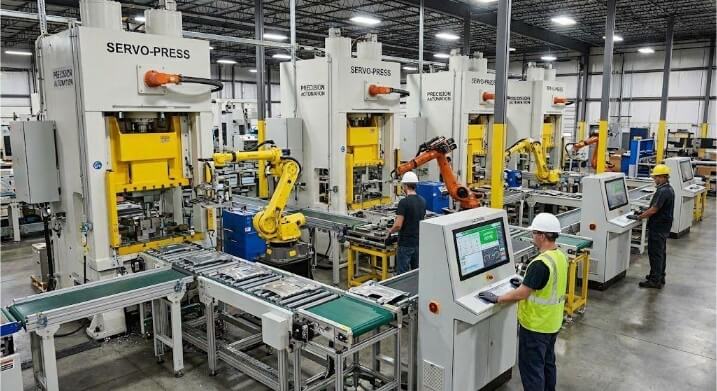We are welcoming you to the world of Shengen’s sheet metal fabrication! We are constantly exploring the intricacies behind metals and treatments. Clients and business partners like yourself often ask, “How can you improve the appearance and feel of your brass components?” Brass anodizing is the answer.
Anodizing brass is an oxidation-controlled process that forms a protective coating on its surface. It gives it an attractive finish with a matte or lustrous look and increases the resistance of brass to corrosion and wear.
You might wonder: “If this is so great, why doesn’t everybody do it?” Shengen is the perfect company to help you with this process.
Understanding the Basics of Anodizing
It’s like magic, but it is grounded in science. It’s a process that uses electrochemistry to convert the metal surface. Imagine the metal is protected by a shield, which gives it strength and enhances its natural beauty.
We use an electric current to form a thin oxide layer on the metal surfaces. The oxide film is a barrier to external influences, such as wear and tear or corrosion.
Shengen is equipped with the latest machines and has a team of dedicated professionals to ensure that each process meets our high standards. The process is a delicate dance between current, temperature, and time.
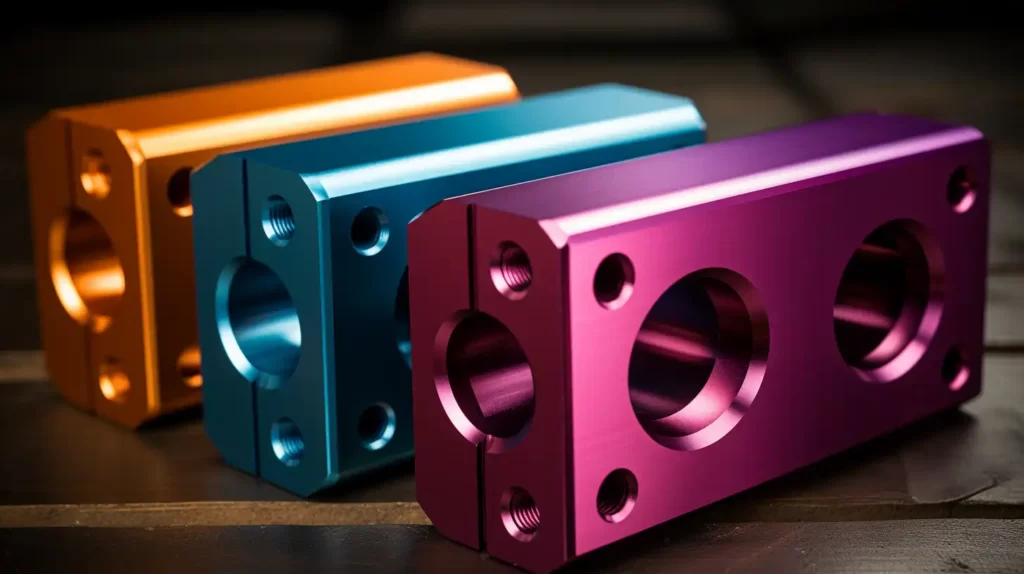
Why choose brass for anodizing?
Why is brass the most popular metal for anodizing? Answer: Its unique properties and composition.
- Lustrous Appearance:Brass is naturally golden in color. This sheen is elevated to a new level by anodizing, which gives it a radiant shine that is both beautiful and eye-catching.
- Brass’s malleability:Brass’s malleability is high, which makes it easy to manipulate. This combination of plasticity and anodizing ensures that function and form are maintained.
- Resistant:While brass is naturally resistant to corrosion, anodizing increases this resistance. This results in a product that is beautiful and long-lasting.
- Diversity:Brass’ rich, golden color complements many designs and applications. Brass is versatile, whether the gold-plated items or intricate exterior trimmings, which our client, Jack Garcia, holds high.
Brass Anodizing Applications
Many applications feature anodized brass because of its advantages. Its versatility is a testament to the confidence our customers place in us.
- Decor Hardware:Think of door knobs and handles. When anodized, these pieces serve a purpose and enhance a room’s aesthetics.
- Jewelry:Anodized Brass Jewelry is a popular choice among those looking for a mix of modernity and tradition.
- Music Instruments:Brass instruments are anodized and promise a melodic sound, durability, and a beautiful appearance.
- Automotive and Aerospace: These industries demand parts with resilience. The anodized brass is a great solution, ensuring that components last even in the most demanding environments.
History of Anodizing: A Historical Overview
The humble origins of anodizing, now a well-established technology, are fascinating. We’ll trace the fascinating history of anodizing from its humble beginnings to its prominence during the 20th century.
Metal Protection: Early methods
Humankind relied on simpler processes to protect precious metals before the invention of complex anodizing. The primitive techniques were developed out of necessity to extend the lifespan of weapons, tools, and ornaments.
- Oxidation: When water or air is exposed, people quickly observe that metals form a thin oxide layer. Although unintentional, this layer provided some protection from further corrosion. This layer was beneficial to brass, which is an alloy of copper.
- Oiling and Greasing: Applying an oil or grease layer on metals acts as a protective barrier from moisture and other harmful elements. This method was commonly employed for crafting weapons and machinery.
- Coating With Pitch Or Tar: Items Need More Robust Protection, Particularly Maritime Tools and Equipment. They Were Often Coated with Pitch or Tar, Preventing Saltwater Corrosion.
- Painting and Lacquering: An aesthetic approach. These coatings offered protection and added a decorative element to metal objects, hinting at modern aspirations for anodizing.
The History of Anodizing: A Short Overview
Anodizing is derived from the treated part forming an anode within an electrical circuit.
- Discovery and Commercialization: In 1923, the first patent for anodizing aluminum was secured. The primary goal behind this innovation was to shield aluminum seaplane parts from the corrosive impacts of oceanic environments. The industrial revolution of anodizing was born.
- Aerospace Adoption: By the middle of the 20th century, the aerospace industry, especially in the U.S.A., started to see the benefits anodizing could bring. Aluminum’s lightweight and increased corrosion resistance made it the perfect material.
- A Variety of Finishes: The latter half of the 20th century saw the emergence of various anodizing techniques. Each way provided a distinctive finish. The options have expanded from hard anodizing to providing extreme wear resistance and color anodizing as an aesthetic finish.
- The Rise of Brass: While aluminum initially remained at the center of attention, over time, brass too has undergone the anodizing process. Brass’s rich golden color and anodizing benefits made it famous in various industries, from high-end electronics to decorative arts.
Anodizing: The Science Behind It
The mechanism that results in the anodized finish operates on well-established scientific tenets. Let me pull the curtain back and show you the complex dance between atoms, molecules, and ions that creates the stunning result.
Electrochemical Processes Revealed
The process of anodizing is electrolytic passivation. It thickens the natural layer of protection on metals. How does this all work?
- Preparation First, the brass part is meticulously cleaned. This step is vital because even a tiny dust particle or a trace of oil could disrupt the entire process.
- Electrolytic Bath: At the outset of the process, a thoroughly cleaned brass component is immersed in an electrolytic bath, typically containing a dilute acid.
- Electric current: Here is where magic happens. The surface of brass is exposed to oxygen ions when an electric current passes through the solution, with the component brass acting as the positive terminal. The metal atoms combine with these ions to produce metal oxide.
- Formation of Oxide Layer:A protective, thick coating is created as metal oxide gradually accumulates to form this layer. This layer is what gives anodized bronze its unique look and enhanced durability.
- Sealing The Deal: Once the component achieves the desired oxide thickness, it undergoes a packing process to improve its corrosion resistance.
Brass Anodizing: Unique Features
Brass is a unique metal that has its own set of anodizing properties.
- Composition: Brass is an alloy composed of zinc and copper. It can develop a protective layer naturally. The anodizing process merely thickens and enhances the protective oxide layer.
- Aesthetics: The brass’s golden hue sets it apart. This inherent allure is further accentuated by anodizing. This process is flexible and can be adjusted to meet different requirements.
- Versatility:Anodizing is not just a protective coating; it also serves as a preparation for other finishing processes. Anodized brass is an excellent base for gold plates if you are a customer like Jack Garcia.
- Interaction with Environment:Brass reacts differently to the electrolytic solution when anodized. Specific alloy compositions can result in different oxide layer properties, which allows for customizing the appearance and feel of a final product.
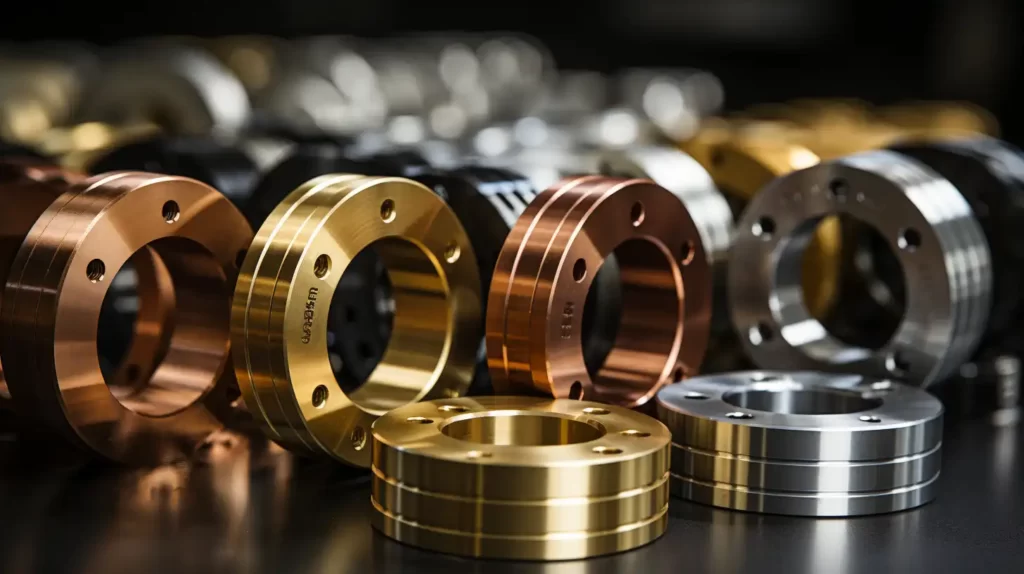
Anodizing Brass Processes
Anodizing is not a one-size-fits-all process. Different processes are required to meet other requirements. Each method is tailored to achieve a specific blend of appearance, durability, and functionality. We’ll explore the world of anodize brass.
Chromic Acid Anodizing (CAA)
Anodizing with Chromic acid, one of the oldest methods is used to achieve minimal changes in the surface.
- Subtle finish:Subtle finish is a process that produces a thin oxide layer in comparison to other methods. It is ideal for parts with tight tolerances because it results in minimal dimensional change.
- Corrosion resistance: Even though the layer is fragile, it offers excellent protection against corrosion.
- Adhesion base:The delicate, porous CAA finish is an ideal surface for painting or applying other coatings.
Sulfuric Acid Anodizing (SAA)
Anodizing with Sulfuric Acid has become the industry standard owing to its adaptability and versatility.
- Variability in Thickness: This process allows for a range of thicknesses from very thin to thick to meet various requirements.
- Wear-resistant and Durable: The SAA Process is ideal for parts subjected to significant wear.
- Aesthetic flexibility:Aesthetic flexibility allows you to dye the oxide layer and achieve various colors.
Hard Anodizing
While hard anodizing is commonly associated with aluminum, it can also be employed on brass to produce a robust, dense oxide layer.
- Extreme durability: This method creates an exceptionally durable surface, increasing wear resistance.
- Thermal insulation: A thicker layer benefits specific applications requiring heat resistance.
- Nature: Brass parts treated with hard anodizing are electrically inducible due to the dense oxide layer. This is a desirable trait for some industries.
Sealed Anodizing
After any anodizing, there is an option to Seal finish.
- Improved protection: Sealing the anodized layers enhances corrosion resistance, particularly in complex environments.
- Aesthetic Improvement: This can give the brass a more polished and shiny look.
- Locking In Dyes:When dyes are incorporated during the anodizing process, a sealant is applied to guarantee that the color remains vibrant and resistant to fading or wear.
Preparing Brass for Anodizing
Anodizing is a complex process that relies on one fundamental principle. The final result of a well-prepared brass product will be visually pleasing and functionally superior. We have refined our preparation methods over the years at Shengen to ensure that each piece is treated ideally. I’ll walk you through the preparation process for brass before it is anodized.
Clean Brass Surface
An initial cleaning is imperative to remove dust, debris, or contaminants.
- Soaking: Brass components are immersed in mild cleaning solutions to remove surface contaminants.
- Ultrasonic Clean: For deeper cleaning, ultrasonic waves pass through the cleaning solution, dislodging even the tiniest contaminants.
- Rinsing:After cleaning, rinse your brass with deionized distilled water. This will ensure that no residues of the cleaning agents remain.
Degreasing Methods and Best Practices
Degreasing involves removing all oils and greases from the manufacturing processes or even human contact.
- Hot-Alkaline Soaking: Brass parts are immersed into a hot, alkaline solution to break down grease and remove oil.
- Vapor degreasing: This method uses solvent vapors to remove fat from complex geometry parts.
- Mechanical Cleaning: A simple scrub with a brush can be the best solution for stubborn residues.
Prepare the brass for anodizing by acid etching.
Acid Etching has two purposes. It smooths out the surface of the brass and prepares it for anodizing.
- Acid Dipping: Brass is submerged in an acidic solution, and its surface is meticulously abraded to enhance adhesion during the anodizing process.
- Timing Is Crucial:It is essential not to over-etch the brass because this could compromise its structural integrity. The art of perfect timing is a skill that Shengen has mastered.
Prepare a Solution for Anodize Brass
Electrolytic solutions are the core of anodizing. The preparation of the electrolytic solution is an art and a science.
- How to Choose the Best Acid: You can choose acids such as sulfuric and chromic, depending on your desired result.
- Acid-Water Ratio Matters: We must maintain the proper acid-water ratio to achieve the best anodizing results.
- Temperature control: The temperature of the solution can affect its final result. Often, it’s cooled down or heated up to the desired temperature.
Consider Adding Brass to the Solution
This is the final step in preparation before introducing electric current.
- Immersion: Brass components are meticulously suspended in anodizing solutions to ensure complete immersion.
- Placement of the Cathode:Cathodes, typically constructed from lead or aluminum, are vital for completing the electrical circuit. Proper order is crucial to ensure an even distribution of current.
- Constant monitoring: During this stage, it’s imperative to keep a close watch on voltage, temperature, and time. Any deviations can potentially impact the quality of the end product.
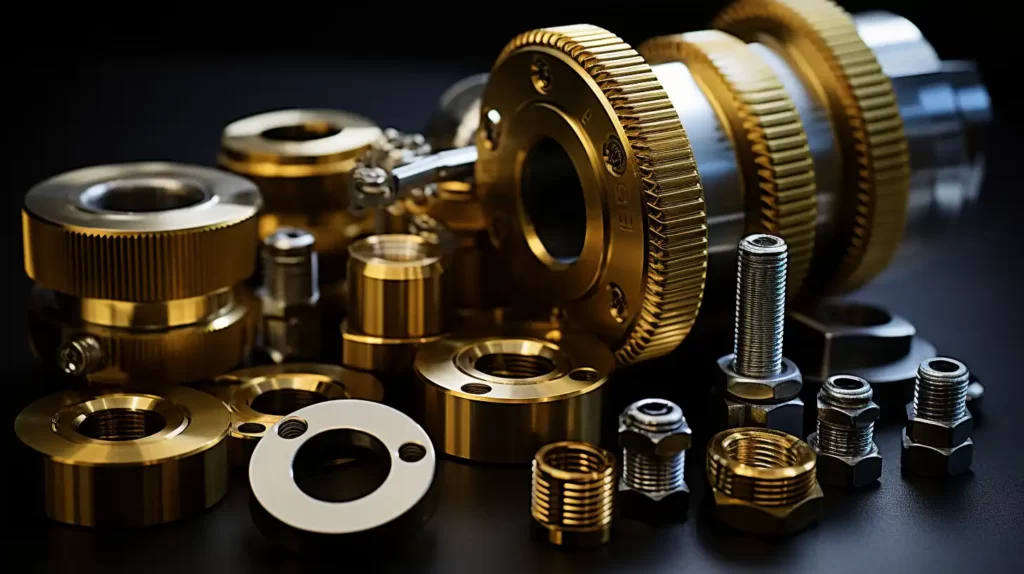
Brass Anodizing Process Explained
It’s an art, honed and perfected over time, representing the fusion of meticulous preparation with scientific accuracy. I will take you step by step through this fascinating process of brass anodizing.
Setting Up Your Anodizing Bath
The bath setup is crucial to the process of anodizing. Proper setup of the bath is crucial for achieving consistent results.
- Tank Materials:The tank should contain non-conductive materials like plastic or fiberglass. This will prevent unnecessary reactions.
- Positioning of Electrodes: Place cathodes and other electrodes uniformly around the tank’s edges for even distribution.
- Heating or Cooling Systems: Depending on the anodizing procedure, the bath may need cooling or heating. It is vital to have efficient systems that maintain the desired temperature throughout the process.
The Right Anodizing Electrolyte
The final look, functionality, and durability of the product are all influenced by the electrolyte you choose.
- Acid type: For brass, most electrolytes are sulfuric acids. For specific finishes, however, chromic acids can be used.
- Additives: Special additives can improve particular properties, such as color, brightness, or corrosion resistance.
- Maintenance: Maintain the electrolyte consistency. It is essential to check the acid level regularly and for potential contaminants.
The Anodizing Parameters are Time, Temperature, and Current
These variables control the anodized finish.
- Duration: Length of anodizing affects oxide layer thickness. Longer durations usually result in thicker layers.
- Temperature: Maintaining the optimal bath temperature is essential. If the temperature is too high or low, it can compromise the finished product.
- Current: A constant current ensures a uniform oxide layer. Variations in current may cause patches and inconsistencies to the surface finish.
After-Anodizing Washing and Neutralization
The brass still needs to be cleaned thoroughly after the process. Once the anodizing process is complete, thorough cleaning is essential.
- Rinsing the Brass with Deionized Water: The brass must be rinsed immediately after anodizing with deionized. The acid is drained, bringing the anodizing process to a halt.
- NeutralizingA mild alkaline, usually a bicarbonate solution, neutralizes acid residues.
- Final rinse: The brass will be completely chemical-free after a second wash.
Color and seal brass after anodizing
Anodizing and coloring brass enhance the metal’s natural beauty while sealing and coloration transform it into an artistic masterpiece. The metal is given a new lease of life by these processes, which provide its vibrant colors and lock in its beauty for a long time.
Anodizing Dyes: An Introduction
Anodizing Dyes are specially formulated solutions that penetrate microscopic holes created by the anodizing procedure. These dyes differ from conventional paints and coatings because they deeply interact with the anodized surface. The result is vibrant colors that will last and resist wear.
- Organic Dyes:Derived organic compounds offer an array of vibrant and transparent colors.
- Inorganic Colors:These metallic salts provide more opaque and are often durable finishes.
- Hybrid Solutions: Blend organic and inorganic dyes, which capture the best from both.
There are many color options for brass anodizing.
Anodizing is full of color. Depending on the dye and technique chosen, a range of colors can be attained.
- Classic Gold: Brass’ golden glow can be intensified, creating a radiant, rich finish.
- Copper and Bronze Tones: This is a popular choice, giving the brass an old-fashioned charm.
- Bold Colors: Modern dyes are capable of transforming brass in any color.
Anodized Brass Colors
It is both a science and an art to color anodized metal. The key is to achieve the right shade and ensure longevity.
- Method:The anodized brass is submerged in dye for a set duration. Immersion in dye solution for extended periods will result in a more intense and saturated color.
- Electrolytic Color: This method involves passing a current through salts of metals to deposit the metal or oxide into the pores of anodized layers, resulting in various metallic colors.
- Layering Colours: Advanced Techniques involve layering multiple colors to create gradient effects, intricate patterns, or other techniques.
Sealing Techniques to Enhance Protection
Sealing is crucial to the anodizing procedure, as it locks in the color and protects the surface against external aggression.
- Hot water sealing: When colored brass is immersed in near-boiling, deionized distilled water, the pores become sealed, trapping the dye.
- Cold sealing: This process, which uses nickel acetate, or chemicals, at lower temperatures to close the pores, is often faster than methods using hot water.
- Teflon Seal:This seal provides protection and gives the brass surface a lubricious feel. It reduces friction between moving parts.
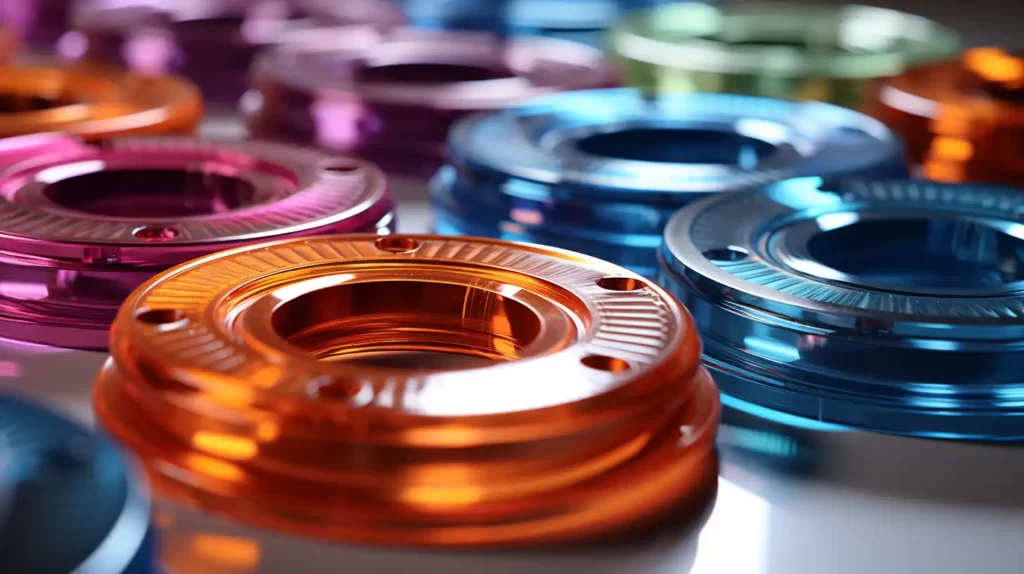
Anodizing Brass: Quality Control: What to Look for
There needs to be more than the steps to perfect the process. Quality is the actual test for success. Our quality control is rigorous, as with all things at Shengen. Transparency is essential to us. We want our customers, such as Jack Garcia, to understand the unique qualities of anodized pieces. I will break down some key parameters we look at to achieve anodizing perfection.
Thickness
The thickness of the anodized layer must remain constant. The uniformity of the coating ensures protection and aesthetics on all brass surfaces.
- Micrometer Measuring: A micrometer measures the thickness of anodized layers with accuracy. Brass anodizing is usually between 0.5 and 25 microns thick, depending on its intended use.
- Break test:By breaking the brass, you can inspect its cross-section to see if it is uniform.
Coat Adhesion
Anodizing should be applied to brass surfaces without peeling, detachment, or other problems.
- Test with tape: By placing the tape over the surface of the anodized coating and pulling it away, you can test the adhesion. The video should not come off the coat.
- Bend Test: By bending the brass component around the curved area, you can determine if it is cracked or detached.
Corrosion resistance
Anodizing is primarily used to protect against corrosion. Anodizing brass increases its natural resistance to the environment.
- Salt Spray Test: To measure the corrosion resistance of anodized metal, we expose it to a salt spray test for a standard period of 336 hours. Anodizing is more effective if the marks of corrosion are less prominent.
- Exposition to Aggressive Environmental Conditions:The corrosion resistance of the brass is evaluated by exposing it to harsh conditions, such as heat, humidity, and chemicals.
Color Uniformity
The color of the anodized colored brass should be consistent across the entire surface. There shouldn’t be any streaks or spots.
- Visual Examination: The brass is visually inspected for color variations under standard lighting.
- Test with a Spectrophotometer: This test assesses how light reflects off the brass surface, ensuring consistent color throughout.
Brass Anodizing: Benefits
It’s not just a simple process but a journey that transforms brass by enhancing its inherent properties while giving it new ones. While the intricacies of the process may be fascinating, its real value is found in the benefits it provides. We’ll explore these benefits.
Enhanced Surface Durability
The significant improvement in surface durability is one of the main reasons businesses invest in anodizing.
- Scratch Resistant: The anodized coating acts as a shield to make the brass resistant to scratches and wear. This is crucial for components that frequently undergo handling or are integral to a moving assembly.
- Long-lasting: Anodized Brass Components are known for being stable. This protective layer keeps the brass in perfect condition even after years of use.
Corrosion resistance
Anodizing brass, naturally corrosion-resistant, adds a layer of protection.
- Protect from Environmental Factors: Anodized Brass is resistant to moisture, UV rays, and other pollutants that can accelerate corrosion.
- Chemical Resistant: Anodized Brass exhibits higher resistance against various chemicals. This makes it ideal for environments that may come in contact with corrosive substances.
The Aesthetic Appeal of the Results
We at Shengen believe in the importance of both functionality and aesthetics. Anodizing is a great way to achieve both.
- Color Versatility: As discussed previously, anodizing allows the customization of colors to meet any branding or design requirements.
- Lustrous finish: Anodized layers can offer a variety of finishes, such as semi-gloss, highly reflective, and matte. Brass components can be adapted to fit seamlessly into various design environments, whether vintage or ultramodern.
- Texture variations: Anodizing, in addition to color, can influence the texture of a surface, from a silky-smooth finish up to a more tactile, textured one.
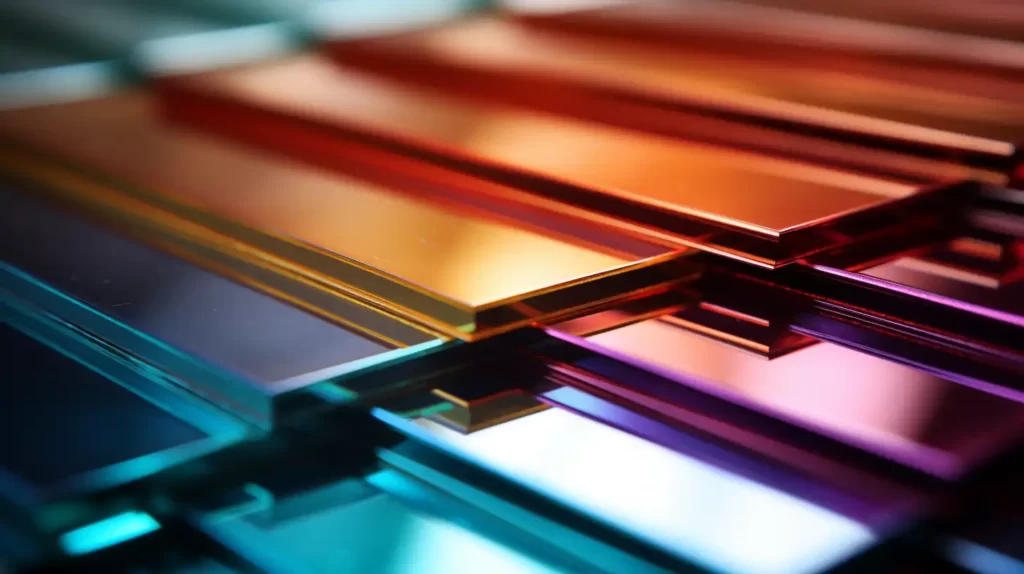
Anodized Brass: Maintenance and Care
The story of a beautiful anodized piece begins with its creation, but the real challenge is to maintain it over the years.
How do you maintain a long-lasting shine?
The anodized finish of brass is relatively easy to maintain, but following specific cleaning procedures can help preserve the appearance and extend its life.
- Gently Cleaning: Use a soft sponge or cloth with warm water to clean the surface. It is possible to remove minor dust particles and smudges with this method without damaging the anodized surface.
- Mild Cleaners: If your brass has become stained or dirty, use a mild cleaner diluted with water. To avoid any adverse reactions, ensure the detergent has a neutral pH.
- Thoroughly Rinse:After cleaning the brass item, thoroughly rinse it with water. To prevent water spots, dry with a lint-free cloth.
- Do Not Use Abrasives: Avoid using steel wool or abrasive cleaning pads. They can damage and scratch the surface.
The Common Problems and their Solutions
Over time, you may encounter specific challenges. Knowing how to deal with them will save you time.
- Color fades:Prolonged exposure to direct sunlight and certain chemicals may cause color fade. Keep the anodized brass away from harmful substances and apply protective coatings when exposed to sunlight.
- Scratches: While the anodized brass is scratch-resistant, it still has some imperfections. Anodized brass is not scratch-proof. Avoid sharp objects and handle them with care.
- Spills: If your brass has come into contact with strong chemicals, immediately wash the area with water.
Why Re-Anodizing is a Good Idea
An anodized finish can show wear and tear over time.
- Visible Wear: If the anodized coating shows signs of deterioration, revealing spots or patches of the underlying brass, you should consider re-anodizing it.
- Consistent discoloration: If the brass’s color fades uniformly, not attributed to any external influences, it might indicate a weakening of the anodizing.
- Demands:In instances where brass components are critical to the structural soundness of a building, periodic assessments become essential, and re-anodizing may be in order.
Anodizing Brass: Potential Problems and Safety Precautions
Brass anodizing is a fascinating world! It comes with unique challenges, just like any ambitious project. This article will provide some insight into the difficulties of brass anodizing and give practical advice and precautions.
Troubleshooting Common Anodizing Issues
It can be challenging to anodize. We’ve listed some of the most common problems and our solutions.
- Inconsistent Coloring: Such issues are frequently due to contaminants on the brass surface. Before anodizing, make sure to clean and degrease the brass surface thoroughly.
- Blowing or Pitting: This issue arises from trapped gas or impurities. Regular bath agitation and maintaining a consistent anodizing flow can prevent it.
- Thick Anodized layer:Shortening the anodizing process or using an inferior electrolyte can cause this issue. Adjust your parameters if necessary.
Anodizing DIY: Safety measures
Safety is paramount if you are an amateur who wants to experiment with brass anodizing in your home or even a smaller setup.
- Protective Equipment: Always wear safety goggles and gloves. The chemicals involved in the anodizing process can be hazardous if not handled properly.
- Ventilation: Make sure your workspace is well-ventilated, as certain substances might release fumes that are harmful to inhale.
- Electrical safety: Anodizing is an electrochemical procedure, so you should know of potential hazards. Ensure your work area is grounded correctly, and don’t let it get wet.
- Know: Read, learn, and educate yourself. Know the chemical you are working with, and prepare for emergencies.
Environment Concerns and Waste Disposal
Unlike other brass component manufacturers, Shengen is equally dedicated to the environment.
- Disposal of Chemicals: Do not pour chemicals into drains. Store them instead in labeled containers, and ask local agencies to dispose of waste.
- Reduce waste:Optimize processes for efficient use of chemicals. It not only reduces the environmental impact but it also saves money.
- Ecofriendly Alternatives: Research and look into eco-friendly options wherever possible. Each small step is essential for creating a more sustainable future.
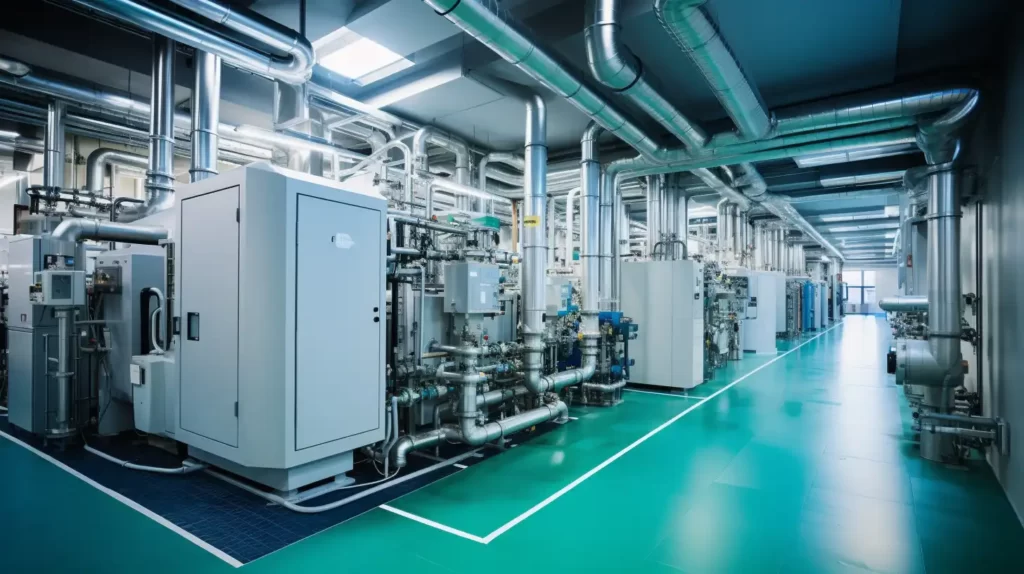
How to remove anodizing from brass
Anodizing involves a lot of adjustments and experiments. There are times when we need to remove the anodized coating from brass. This could be for various reasons, including a new start or to correct a mistake. We’ll explore some of the most effective methods.
- Stripping: Using solutions to dissolve the anodized coating is one way of achieving this. Stripping solutions commonly used include a mixture containing phosphoric and chromic acid. To remove the anodized coating, immerse the brass in the solution, monitoring closely. This process requires diligent submersion of the brass. When working with chemicals, always wear protective eyewear and gloves.
- Removal by Mechanical Means:uses physical methods like sanding and abrasive blasting. It is effective but requires some skill to avoid damaging the brass. Start with a mild abrasive, then move on to coarser abrasives as necessary.
- Electrolytic Strip:This is the reverse of anodizing. The brass is an anode in an acidic solution, while the electric current lifts the anodized coating.
Every method is unique and has advantages as well as challenges. It depends on your requirements, available resources, and the technique’s comfort.
How can we ensure perfect anodizing in Shengen?
Here’s our formula for perfection:
- Precise Electrolyte Balance: The balance of chemicals in the anodizing bath is pivotal. To ensure uniform anodizing, we continuously adjust and monitor the electrolyte.
- Controlled Temperature: Maintaining the correct temperature is essential. Anodizing quality will be affected if the temperature is too hot or cold. Over the years, we’ve perfected a balance.
- Experience: With our team of dedicated professionals and cutting-edge equipment, including laser-cutting machines, we can meet complex anodizing needs. Quality is not just a buzzword to us; it’s part of our culture.
Conclusion
At its core, anodizing is much more than a simple technique. Anodizing is a commitment to quality, beauty, and durability. This product embodies the same values guiding us daily: pursuing excellence, building enduring relationships, and providing unparalleled value.
Do you need a reliable sheet metal parts manufacturer? Shengen is the place to go. We specialize in sheet metal laser cutting, bending, surface finish, and sheet metal welding. We place a high priority on establishing trust, maintaining standards of quality, providing competitive prices, and guaranteeing timely delivery. Reach out to Shengen Today and seek help from professionals!
More Resources:
Brass – Source: Wikipedia
How to Anodize Brass – Source: Piping Mart
Hey, I'm Kevin Lee

For the past 10 years, I’ve been immersed in various forms of sheet metal fabrication, sharing cool insights here from my experiences across diverse workshops.
Get in touch

Kevin Lee
I have over ten years of professional experience in sheet metal fabrication, specializing in laser cutting, bending, welding, and surface treatment techniques. As the Technical Director at Shengen, I am committed to solving complex manufacturing challenges and driving innovation and quality in each project.




